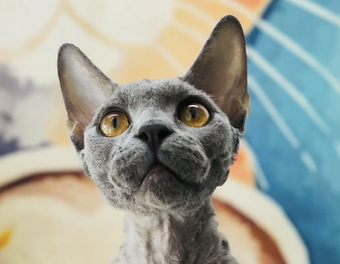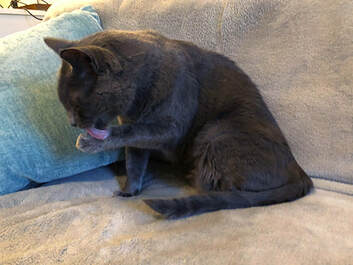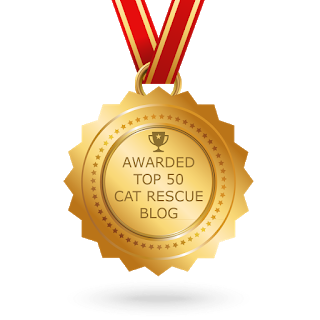
A little understood condition, feline chin acne is basically a disorder of follicular keratinization (the overproduction of keratin, a protein found in the outer layer of the skin). Once excess keratin is trapped in the hair follicle, comedones or blackheads form, and should they become infected by bacteria, pimples or larger sores, similar to boils will result.
Some experts surmise that follicular keratinization may, itself, be related to excessive natural oil production by a cat’s skin. Others suggest that allergies, immunosuppression, stress, viral infection, and/or poor grooming habits may play a role in it. There may even be a connection between plastic food and water dishes and chin acne because the plastic’s uneven surface and inevitable scratches make it more prone to bacterial contamination.
Whatever the underlying cause, however, the most common overt sign of a cat with chin acne is the skin’s “dirty appearance.” Lesions may appear on her chin, lower lip and/or upper lip. A careful examination of her face will likely reveal blackheads and infected follicles, while her lips and chin may be swollen and inflamed (folliculitis). And if she has hard, crusty lesions that are causing her pain, this condition is known as furunculosis.
Vets typically diagnose chin acne based on the affected cat’s medical history and clinical signs. They may also order blood and urine tests, as well as skin cultures, skin cytology, and culture and sensitivity tests. If her lesions have an atypical appearance, they may recommend biopsies or skin scrapings to rule out cancer or some immune-mediated disease. And because an infected tooth root can mimic the appearance of chin acne, they may have dental x-rays taken.
Once a diagnosis is made, depending, of course, on the results, treating a cat’s chin acne always starts with an improved hygiene regime. Clipping her hair short and replacing plastic food and water dishes with smooth-surfaced, nonporous glass or stainless steel dishes, and scrupulously washing them daily, helps some cats. Using a benzoyl peroxide facial preparation or an anti-seborrheic shampoo will both cleanse the affected area and flush out the hair follicles. Applying an antibiotic ointment containing mupirocin (Muricin®) is highly effective as is clindamycin gel or a liquid preparation (Antirobe®, Cleocin®, ClinDrops®). Some cats benefit from taking Omega 3 fatty acids while, in more severe or chronic cases, vets may prescribe oral antibiotics, corticosteroids (to reduce inflammation) or isotretinoin (the human acne drug, Accutane®).
Thankfully, most cases of chin acne respond well to improved hygiene in combination with topical preparations and/or systemic medications, but cat owners must adhere closely to their own vet’s instructions to ensure ultimate and long lasting success and a happier, healthier cat.










 RSS Feed
RSS Feed